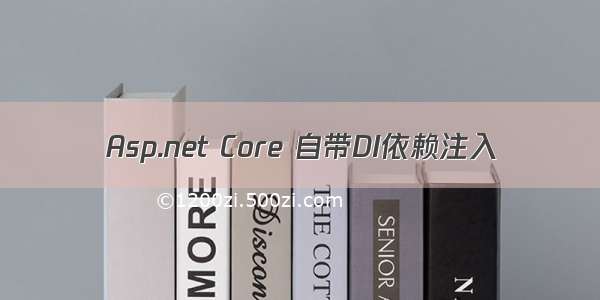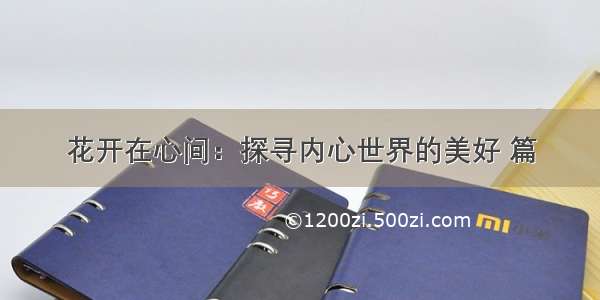
在上一章中主要和大家分享在MVC当中如何使用 Core内置的DI进行批量依赖注入,本章将继续和大家分享在 Core中如何使用Autofac替换自带DI进行批量依赖注入。
PS:本章将主要采用构造函数注入的方式,下一章将继续分享如何使之能够同时支持属性注入的方式。
约定:
1、仓储层接口都以“I”开头,以“Repository”结尾。仓储层实现都以“Repository”结尾。
2、服务层接口都以“I”开头,以“Service”结尾。服务层实现都以“Service”结尾。
接下来我们正式进入主题,在上一章的基础上我们再添加一个web项目TianYa.DotNetShare.CoreAutofacMvcDemo,首先来看一下我们的解决方案
本demo的web项目为 Core Web 应用程序(.NET Core 2.2) MVC框架,需要引用以下几个程序集:
1、TianYa.DotNetShare.Model 我们的实体层
2、TianYa.DotNetShare.Service 我们的服务层
3、TianYa.DotNetShare.Repository 我们的仓储层,正常我们的web项目是不应该使用仓储层的,此处我们引用是为了演示IOC依赖注入
4、Autofac 依赖注入基础组件
5、Autofac.Extensions.DependencyInjection 依赖注入.NET Core的辅助组件
其中Autofac和Autofac.Extensions.DependencyInjection需要从我们的NuGet上引用,依次点击下载以下2个包:
接着我们在web项目中添加一个类AutofacModuleRegister.cs用来注册Autofac模块,如下所示:
using System;using System.Collections.Generic;using System.Linq;using System.Reflection;using System.Threading.Tasks;using Autofac;namespace TianYa.DotNetShare.CoreAutofacMvcDemo{/// <summary>/// 注册Autofac模块/// </summary>public class AutofacModuleRegister : Autofac.Module{/// <summary>/// 重写Autofac管道Load方法,在这里注册注入/// </summary>protected override void Load(ContainerBuilder builder){builder.RegisterAssemblyTypes(GetAssemblyByName("TianYa.DotNetShare.Repository")).Where(a => a.Name.EndsWith("Repository")).AsImplementedInterfaces();builder.RegisterAssemblyTypes(GetAssemblyByName("TianYa.DotNetShare.Service")).Where(a => a.Name.EndsWith("Service")).AsImplementedInterfaces();//注册MVC控制器(注册所有到控制器,控制器注入,就是需要在控制器的构造函数中接收对象)builder.RegisterAssemblyTypes(GetAssemblyByName("TianYa.DotNetShare.CoreAutofacMvcDemo")).Where(a => a.Name.EndsWith("Controller")).AsImplementedInterfaces();}/// <summary>/// 根据程序集名称获取程序集/// </summary>/// <param name="assemblyName">程序集名称</param>public static Assembly GetAssemblyByName(string assemblyName){return Assembly.Load(assemblyName);}}}
然后打开我们的Startup.cs文件进行注入工作,如下所示:
using System;using System.Collections.Generic;using System.Linq;using System.Threading.Tasks;using Microsoft.AspNetCore.Builder;using Microsoft.AspNetCore.Hosting;using Microsoft.AspNetCore.Http;using Microsoft.AspNetCore.Mvc;using Microsoft.Extensions.Configuration;using Microsoft.Extensions.DependencyInjection;using Autofac;using Autofac.Extensions.DependencyInjection;namespace TianYa.DotNetShare.CoreAutofacMvcDemo{public class Startup{public Startup(IConfiguration configuration){Configuration = configuration;}public IConfiguration Configuration { get; }// This method gets called by the runtime. Use this method to add services to the container.public IServiceProvider ConfigureServices(IServiceCollection services){services.Configure<CookiePolicyOptions>(options =>{// This lambda determines whether user consent for non-essential cookies is needed for a given request.options.CheckConsentNeeded = context => true;options.MinimumSameSitePolicy = SameSiteMode.None;});services.AddMvc().SetCompatibilityVersion(CompatibilityVersion.Version_2_2);return RegisterAutofac(services); //注册Autofac }// This method gets called by the runtime. Use this method to configure the HTTP request pipeline.public void Configure(IApplicationBuilder app, IHostingEnvironment env){if (env.IsDevelopment()){app.UseDeveloperExceptionPage();}else{app.UseExceptionHandler("/Home/Error");}app.UseStaticFiles();app.UseCookiePolicy();app.UseMvc(routes =>{routes.MapRoute(name: "default",template: "{controller=Home}/{action=Index}/{id?}");});}/// <summary>/// 注册Autofac/// </summary>private IServiceProvider RegisterAutofac(IServiceCollection services){//实例化Autofac容器var builder = new ContainerBuilder();//将services中的服务填充到Autofac中 builder.Populate(services);//新模块组件注册 builder.RegisterModule<AutofacModuleRegister>();//创建容器var container = builder.Build();//第三方IoC容器接管Core内置DI容器 return new AutofacServiceProvider(container);}}}
PS:需要将自带的ConfigureServices方法的返回值改成IServiceProvider
接下来我们来看看控制器里面怎么弄:
using System;using System.Collections.Generic;using System.Diagnostics;using System.Linq;using System.Threading.Tasks;using Microsoft.AspNetCore.Mvc;using TianYa.DotNetShare.CoreAutofacMvcDemo.Models;using TianYa.DotNetShare.Service;using TianYa.DotNetShare.Repository;namespace TianYa.DotNetShare.CoreAutofacMvcDemo.Controllers{public class HomeController : Controller{/// <summary>/// 定义仓储层学生抽象类对象/// </summary>protected IStudentRepository StuRepository;/// <summary>/// 定义服务层学生抽象类对象/// </summary>protected IStudentService StuService;/// <summary>/// 通过构造函数进行注入/// 注意:参数是抽象类,而非实现类,因为已经在Startup.cs中将实现类映射给了抽象类/// </summary>/// <param name="stuRepository">仓储层学生抽象类对象</param>/// <param name="stuService">服务层学生抽象类对象</param>public HomeController(IStudentRepository stuRepository, IStudentService stuService){this.StuRepository = stuRepository;this.StuService = stuService;}public IActionResult Index(){var stu1 = StuRepository.GetStuInfo("10000");var stu2 = StuService.GetStuInfo("10001");string msg = $"学号:10000,姓名:{stu1.Name},性别:{stu1.Sex},年龄:{stu1.Age}<br />";msg += $"学号:10001,姓名:{stu2.Name},性别:{stu2.Sex},年龄:{stu2.Age}";return Content(msg, "text/html", System.Text.Encoding.UTF8);}public IActionResult Privacy(){return View();}[ResponseCache(Duration = 0, Location = ResponseCacheLocation.None, NoStore = true)]public IActionResult Error(){return View(new ErrorViewModel { RequestId = Activity.Current?.Id ?? HttpContext.TraceIdentifier });}}}
至此完成处理,接下来就是见证奇迹的时刻了,我们来访问一下/home/index,看看是否能返回学生信息。
可以发现,返回了学生的信息,说明我们注入成功了。
至此,本章就介绍完了,如果你觉得这篇文章对你有所帮助请记得点赞哦,谢谢!!!
demo源码:
链接:/s/1un6_wgm6w_bMivPPRGzSqw 提取码:lt80
版权声明:如有雷同纯属巧合,如有侵权请及时联系本人修改,谢谢!!!
Core Web 应用程序系列(二)- 在 Core中使用Autofac替换自带DI进行批量依赖注入(MVC当中应用)...














